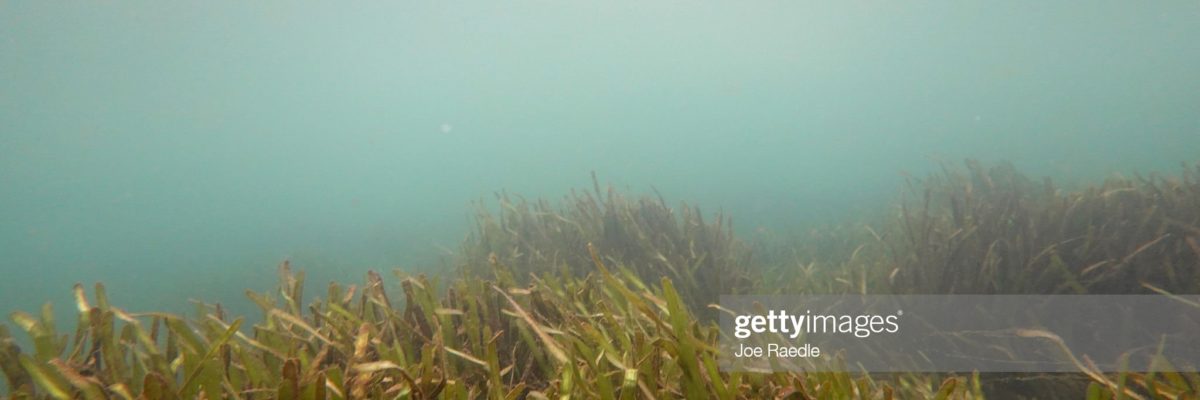
In a break from writing about the fish and ecosystems of the tropics, we explore our own native underwater flora, why seagrass is so important and the efforts undertaken to preserve and revive these ailing aquatic meadows.
Once well established and found all around the coast of the UK on mudflats and sand. These seagrass meadows have faced numerous problems, with a startling reduction in the 1930s attributed to a wasting disease, this has since been compounded by raw sewage discharge, loss of habitat, competition by non-native species and climate change amongst other factors.
There are four species of seagrass in the UK – two varieties of ‘tasselweed’ which favour brackish waters and two species more widely recognised as ‘eelgrass’ – and unlike seaweed (an algae), seagrass pollinates while completely submerged. They also flower, have roots and colonise in such a way that they resemble great swathes of grassland. Seagrass can grow up to 2 metres in length and tends to favour sheltered spots, like bays, lagoons and even harbours.
Seagrass possesses both an ecological and biological value. With its ‘blue carbon’ abilities, it’s a crucial resource against climate change. Blue carbon refers to carbon taken from the atmosphere and stored off our coasts in marine ecosystems. Seagrass can capture carbon 35 times faster than a rainforest, with these meadows accounting for 10% of the ocean’s buried carbon – and that’s with less than a 0.2% stake of the ocean’s floor!
Seagrasses absorb carbon from water to grow leaves and roots, (much like trees collecting it from the air to build their trunks) when they die back, this matter collects and subsequently breaks down on the seafloor, where this carbon rich sediment can lay stored for years if left undisturbed. Seagrass also provides irreplaceable habitat for wildlife, with meadows harbouring 40 times more marine life than bare seabeds alone. This includes nurseries for juvenile fish and protected animals like seahorses and stalked jellyfish.
An area equivalent to 18% of the world’s seagrass has been lost in the last few decades. It’s estimated that the decline is as high as 7% a year globally. In the UK alone, scientific research published last year in the journal Frontiers in Plant Science, has concluded that we have suffered upwards of a 90% reduction in our seagrass meadows. Invasive alien species (Spartina anglica and Sargassum muticom), dredging practices, anchors, and toxic nutrients from sewage and the smothering algae it prospers, as well as SWD (seagrass wasting disease), have formed a deadly concoction, creating an inhospitable environment for our temperate seagrass.
There is hope however, the WWF (World Wide Fund for Nature) have colluded with Project Seagrass, Swansea University and Sky Ocean Rescue to distribute 1.2 million seagrass seeds across coastal regions in Pembrokeshire, Wales. Project Seagrass have also devised a handy tool whereby – either by app or desktop – you can record seagrass as and when you find it, meaning that anyone can contribute to the effort of collecting data for the purpose of saving our underwater meadows.
Elsewhere in the UK and within the last few weeks, new milestones have been accomplished and publicised as England’s largest ever project to restore lost seagrass has successfully planted some 70,000 seed bags, in an area of seabed equivalent to 3.5 hectares.
Natural England is leading the effort, with a fund granted through the EU LIFE Programme. The partnership titled ‘Save Our Seabed’ with LIFE Recreation ReMEDIES is worth £2.5 million and was launched in 2019. The project manager for Natural England, Fiona Crouch, described seagrass meadows as “an important but threatened habitat”, she went on to say that “restoring them means restoring the benefits they bring to people and nature – vital homes for wildlife, enhanced water quality, carbon storage and so much more.”
Volunteers put between 30 – 50 seeds into biodegradable hessian bags. These bags are then dropped at a rate of 1 per second, which translates to one bag every 50 centimetres after they’ve made their way down a 4 metre long tube and onto the seabed.
Other organisations have been brought on board, such as the Ocean Conservation Trust, to help aid the recovery in 5 Special Areas of Conservation – or ‘SACs’ – in Southern England. The work encompasses not only dropping seed bags, but surveys and mapping of existing seagrass beds with the objective being to educate recreational marine users. Initiatives such as introducing the idea of voluntary ‘No-Anchor Zones’ and Advanced Mooring Systems are being trialled.
The work being carried out is to combat seagrass losses. The partnership has a target to plant 8 hectares in total across two SACs, four hectares in Plymouth Sound National Marine Park and four hectares in the Solent Maritime Special Area of Conservation. Mark Parry, Development Officer with the Ocean Conservation Trust said that “Seagrass meadows are one of the most valuable and biodiverse habitats on the planet. By restoring seagrass, we are ensuring they will continue to provide vital environmental benefits to both people and the planet.”
Later this year, divers will be visiting healthy seagrass meadows with the aim of collecting seeds. These will be sent to ReMEDIES laboratories and grown on until they are ready to be transferred back to the sea. These seedlings are currently grown on ‘pillows’. This new method will allow seedlings to be planted directly into the seabed.
The success and key findings from these projects will be shared by ReMEDIES with other marine conservation projects, to help further the study and rejuvenation of these delicate ecosystems across the UK and Europe.